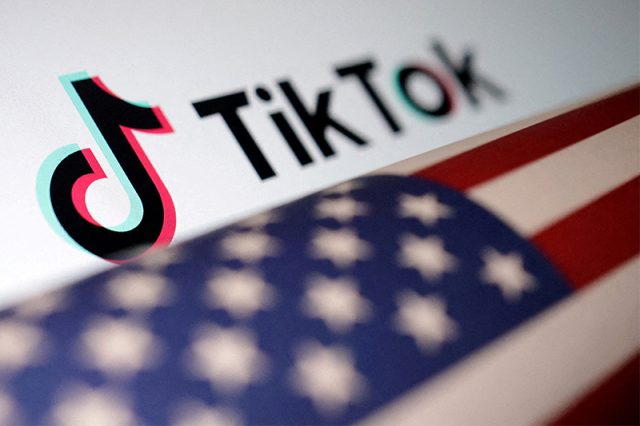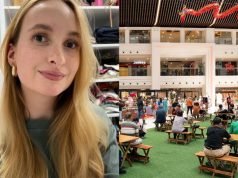
TikTok is working on a clone of its recommendation algorithm for its 170 million U.S. users that may result in a version that operates independently of its Chinese parent and be more palatable to American lawmakers who want to ban it, according to sources with direct knowledge of the efforts.
The work on splitting the source code ordered by TikTok’s Chinese parent ByteDance late last year predated a bill to force a sale of TikTok’s U.S. operations that began gaining steam in Congress this year. The bill was signed into law in April.
The sources, who were granted anonymity because they are not authorized to speak publicly about the short-form video sharing app, said that once the code is split, it could lay the groundwork for a divestiture of the U.S. assets, although there are no current plans to do so.
The company has previously said it had no plans to sell the U.S. assets and such a move would be impossible.
TikTok initially declined to comment. After publication of this story, TikTok in a posting on X said “The Reuters story published today is misleading and factually inaccurate,” without specifying what was inaccurate.
TikTok also posted a passage from its federal lawsuit: “the ‘qualified divestiture’ demanded by the Act to allow TikTok to continue operating in the United States is simply not possible: not commercially, not technologically, not legally. And certainly not on the 270-day timeline required by the Act.”
“We stand by our reporting,” a Reuters spokesperson said.
TikTok and its Chinese parent company ByteDance sued in U.S. federal court in May, seeking to block the law forcing a sale or ban of the app by Jan. 19. A U.S. appeals court on Tuesday set a fast-track schedule to consider the legal challenges to the new law.
Millions line of code
In the past few months, hundreds of ByteDance and TikTok engineers in both the U.S. and China were ordered to begin separating millions of lines of code, sifting through the company’s algorithm that pairs users with videos to their liking. The engineers’ mission is to create a separate code base that is independent of systems used by ByteDance’s Chinese version of TikTok, Douyin, while eliminating any information linking to Chinese users, two sources with direct knowledge of the project told Reuters.
The previously unreported plan provides a rare look into what a technical separation of TikTok’s U.S. operations could be like, and shows to what lengths TikTok will go to address the bipartisan political risk it faces. U.S. President Biden and other supporters of the law argue TikTok gives Beijing far too much access to reams of data, information that could be used to spy on or influence TikTok’s U.S. users.
Reuters previously reported that a sale of the app with algorithms is highly unlikely. The Chinese government in 2020 added content recommendation algorithms to its export-control list, requiring a divestiture or sale of TikTok’s algorithm to go through its administrative licensing procedures.
The source code for TikTok’s recommendation engine was originally developed by ByteDance engineers in China, and customized for operations in TikTok’s various global markets, including the U.S., according to a legal filing.
ByteDance has attributed TikTok’s popularity to the effectiveness of its recommendation engine, which bases each user’s content feeds on how they interact with the content they watch.
‘Open source’
The complexity of the task that the sources described to Reuters as tedious “dirty work” underscores the difficulty of splitting the underlying code that binds TikTok’s U.S. operations to its Chinese parent. The work is expected to take over a year to complete, these sources said.
TikTok and ByteDance have vowed to battle the U.S. law in court on First Amendment grounds. Nevertheless, engineers continue to operate under orders to disentangle TikTok’s U.S. recommendation engine from ByteDance’s broader network, the sources said.
An earlier plan to silo off U.S. user data, called Project Texas, failed to appease U.S. regulators and lawmakers. Now the company is seeking to escalate its efforts to show its U.S. operations are independent of its Chinese owner.
At one point, TikTok executives considered open sourcing some of TikTok’s algorithm, or making it available to others to access and modify, to demonstrate technological transparency, the sources said.
Executives have communicated plans and provided updates on the code-splitting project during a team all-hands, in internal planning documents and on its internal communications system, called Lark, according to one of the sources who attended the meeting and another source who has viewed the messages.
Reuters could not independently verify internal messages.
Compliance and legal issues involved with determining what parts of the code can be carried over to TikTok are complicating the work, according to one source. Each line of code has to be reviewed to determine if it can go into the separate code base, the sources added.
The goal is to create a new source code repository for a recommendation algorithm serving only TikTok U.S. Once completed, TikTok U.S. will run and maintain its recommendation algorithm independent of TikTok apps in other regions and its Chinese version Douyin. That move would cut it off from the massive engineering development power of its parent company in Beijing, the sources said.
If TikTok completes the work to split the recommendation engine from its Chinese counterpart, TikTok management is aware of the risk that TikTok U.S. may not be able to deliver the same level of performance as the existing TikTok because it is heavily reliant on ByteDance’s engineers in China to update and maintain the code base to maximize user engagement, sources added.
—Reporting by Krystal Hu in New York and Sheila Dang in Austin, additional reporting by Dawn Chmielewski in Los Angeles; editing by Kenneth Li and Anna Driver









